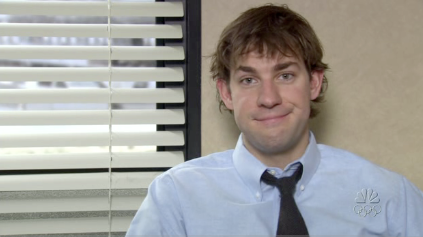wrestling / Columns
The Brain Buster 07.06.13: Professional Wrestling’s Fourth Wall

As a fan of both professional wrestling and the theatre, I find myself constantly meditating on the similarities between the two arts. Although you may be hard pressed to find many astute scholars to speak on the similarities between Shakespeare’s work and the program that has a fascination with little people, feeds on stereotypes, and has broadcasted Ultimate Warrior promos – I stand up to slowly show the bridge between the gap. One of the more interesting aspects of professional wrestling, when keeping the theatre in mind, is its use, or its deconstruction, of the fourth wall.
The fourth wall stands as the barrier between us, the audience, and the television – or other media programs – we are watching. It puts up the wall of the story, where actor A does not exist, only the character does. In the fourth wall, the University of New York is real, and no one knows what this NYU you keep talking about is. It’s pretty basic stuff, and a feature that does and does not exist in professional wrestling. We all heard CM Punk refer to it during his infamous promo, but I never really sat down and wondered what exactly the fourth wall in pro wrestling is.
In order to give us a start, I deconstructed CM Punk’s actions during the time when he acknowledged he was breaking the fourth wall. Was it his referring to WWE’s Raw, as a television program? When Punk acknowledged that there is a fourth wall, he also acknowledged that this program is, in fact, not a reality, but merely a television program. R-Truth is not a psychotic schizophrenic conspiracy theories, his match with John Cena was not personal, it’s all not real. This can all be inferred with the acknowledgement that the television program is not a reality; however, is that the effect in professional wrestling when pointing out such circumstances. Not at all. There is constant reference to Monday Night Raw as at television program. The characters on screen acknowledge that they are on television and are being watched by people at home. The characters are aware that this is a television program about them. It’s part of their development as a character.
If acknowledging the program as a television show is not breaking the forth wall, the next issue would be Punk looking directly at the camera and waving. The reason it is faux paux for a character to look directly into the camera is because, with this, you are looking directly at the audience. The audience should not be acknowledged in most stories. Paying heed to the audience, once again, destroys the show’s reality, and brings into light that what we are watching is not real – it is not genuine. Although I’m not accusing anyone of thinking wrestling, or any other television program is real, when we are watching, we suspend the belief and buy into the story. The audience serves as voyeurs – gaining our pleasure from watching the activities of others. If a voyeur is seen, it dilutes the pleasure received from watching – and will most likely nail you a jail sentence depending on what you’re voyeuring. With wrestling, I’ve found, this, again, does not break the fourth wall. Think about any promo given ever. They are most likely looking directly at the camera. If they’re not looking directly at the camera, they are certainly looking directly at the audience. Hell, they even acknowledge the audience (“you people watching at home,” etc).

So, I broke down the scene, and thought about it each and every way, but I am certain that, even though Punk said he broke the fourth wall, he most certainly did not. Which again goes back into question what is the fourth wall. What we do know is that professional wrestling presents a program that is unique to the majority of things on television. Most television shows cannot present characters that are looking directly at the screen and acknowledging the audience, and still remain with a semblance of its fictional reality in the show, yet the professional wrestling programs have been breaking these rules for years. It’s unique. The characters are allowed to look at and speak directly to the voyeurs and it is perfectly acceptable. I’m not saying wrestling is the only program that can do this. Reality television has characters looking at the camera during confessionals. Faux reality shows such as The Office and Parks and Recreations have this as well. I’ll give you a great example of a character breaking the fourth wall and it being perfectly acceptable. In the first Superman movie, during the final scene, when Superman is flying in space around the earth, he looks directly into the camera, smiles, and flies off.
So what makes wrestling’s fourth wall so different that I decided to grace your presence with a column about it? It lies in the same reason that ending to Superman is so satisfying. I’ll explain. We mentioned that the reality and mock reality shows have characters acknowledge the fourth wall constantly; however, that does not harm the reality of the show. The reason it doesn’t is because the characters are real. These characters are portrayed, not as fictional, but as a real people who just happened to be on camera. That’s why it’s so funny when Jim Halpert looks at the camera when Michael Scott says something outrageous. He’s looking at the audience and saying, “did you see that?” He’s a voyeur much like us, and receiving the same pleasure or displeasure we would. The characters in the reality series are just as much part of the audience as we are. Their reactions and acknowledgement towards what happened are important to show that these characters are real. With the Superman movie, it works a bit different. Unfortunately, Superman is not a real character; yet, him looking directly at the audience and acknowledging satisfies us. Why? Because it fits the characters. When Superman looked at the camera, he did not break character. He didn’t, all of a sudden, become Christopher Reeves. He remained Superman. What he said when he looked at us was, “yes, I know you earthlings are watching, and I will always protect you.” It fits him so well, and even though he technically breaks the fourth wall, the audience is so enthralled with the character that they do not notice any fragment in reality. We know Superman isn’t real, but him looking at us – crossing between the movie reality and our reality – satisfies us because it remains in his character. Superman is so powerful and he’s so commendable, I can believe that somehow – even though I know it’s a movie – he has my back. It forms almost a new reality.
Professional wrestling’s fourth wall sits between the Superman movie and reality television. We overlook the fact that the characters are interacting with the audience because they exist as almost reality television stars. For example, John Cena comes out every night, looks directly at the camera at the top of the ramp, and has a bit of a conversation with the television audience. This does not break the fourth wall, yet serves the same purpose almost as a confessional on a reality show. The confessional, more than anything, helps develop or reinforce the personality of the character. As most of the internet wrestling community is aware, John Cena has established his personality long ago, so this serves more as a reinforcement. “Hi, I’m John Cena, I’m a funny guy who’ll serve as a good influence to your kids. Here is me running.” Much like Superman, it not only does not bother us when characters such as Cena look at the camera, it elates us. Well… maybe not Cena in particular. But when Daniel Bryan looked at the camera and the audience and made his case towards the WWE hiring him, it elated us. When Hulk Hogan puts his hand to his ear, signaling the audience to cheer for him, it elates us. It all elates us. We feel part of the storyline. We feel as if though we contribute to the character and the program, and that is what sets professional wrestling apart from most things, outside shows like Jerry Springer, etc.
Professional wrestling not only expands their forth wall, they almost demolish it to include us, the audience. Think about it. There is constant reference to the WWE universe. That’s us. We’re a character in professional wrestling. That gives the writers almost a limitless expansion of what is the fourth wall. When the audience is included as a character, the artistic bounds are incredibly expansive. When the fourth wall is broken, the audience should feel strange, perhaps even a bit perturbed. The reality they have set into as voyeurs has been shattered, and brings back into light their own reality and their own inadequacies, fears, and hatreds. It should feel weird, and it should make the audience angry when it is broken. When is it broken in professional wrestling, since the audience is a character? I would argue that it is broken only when something goes wrong. Eddie Guerrero is pushed off the ladder by a crazed fan. THAT is breaking the fourth wall. Eddie was selling an injury at that point, but as soon as he was pushed off, he immediately raised his dukes and moved quickly towards the audience member to confront him, before security took him out. There is unease in the air when it happens. It’s because the fourth wall was broken. The reality has been shattered and we are made to think of our meager existence once again. The same thing can be said for the majority of things on the Botchamania series. The only time the fourth wall can be broken in professional wrestling is when something goes wrong.

I like this idea of the fourth wall so much because it is a defining characteristic of professional wrestling. I like feeling part of the program, as well as the feeling of playing a character. I like it because it is a brick in the bridge between pro wrestling and theatre. Theatre uses the audience the same way as wrestling does, as a character. Let me use Shakespeare for example. The first character to grace the stage in most Shakespeare work is the chorus. The chorus gives the background of the story, and frequently appears later in the play – usually between acts – to provide more background. Who is the chorus speaking to? He certainly is not an active character. He usually will not interact with any other character, yet his role is pivotal. He makes the audience a character. He, much like Jim Ross, breaks down the action so you can best understand it and see the perspective of the director clearly. It’s a brilliant tactic. The chorus is not the only part to push the fourth wall, for there are many monologues present. The monologues, as you may have guessed, are not spoken for the sake of speaking; they are said in order for the audience to get a clear understanding of what the character is thinking. It’s the Renaissance’s confessional. And although the theatre has a certain stigma towards it now, historically, the audience was expected to be quite active during select scenes in the days of artists such as Shakespeare. It all bridges the gap between realities, and forms a different universe, one that provides pleasure while still in acknowledgment that it is not real. I truly cherish seeing these aspects in professional wrestling, and truly cherish seeing this type of artistic fervor in the program that entertains me so much.







